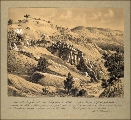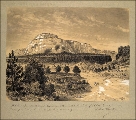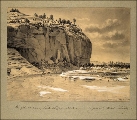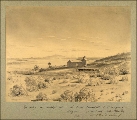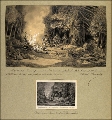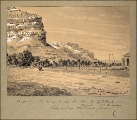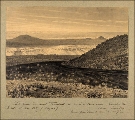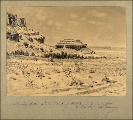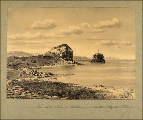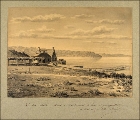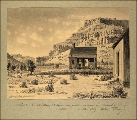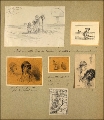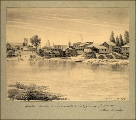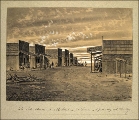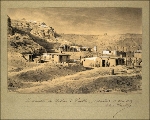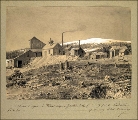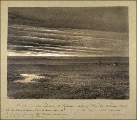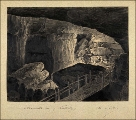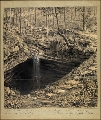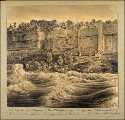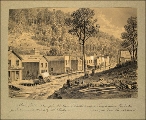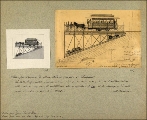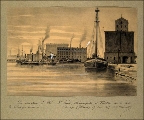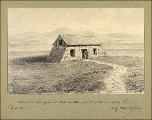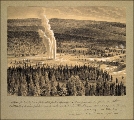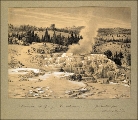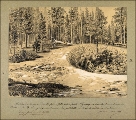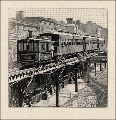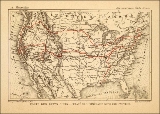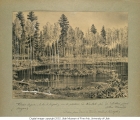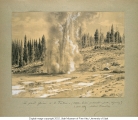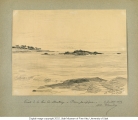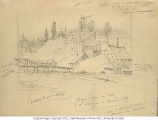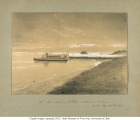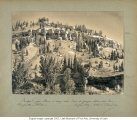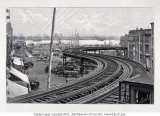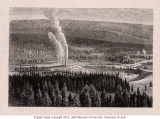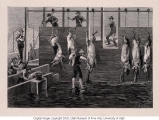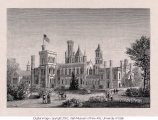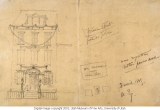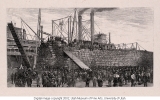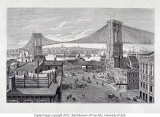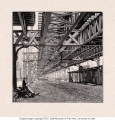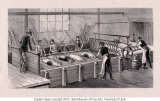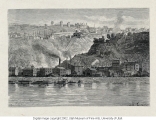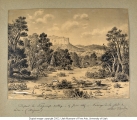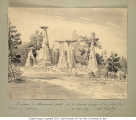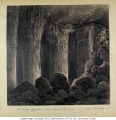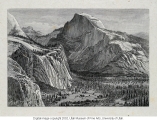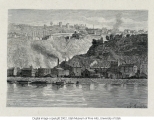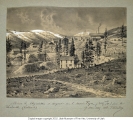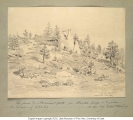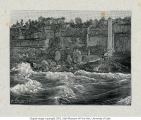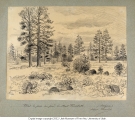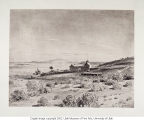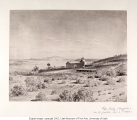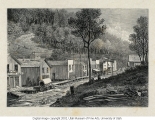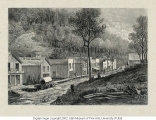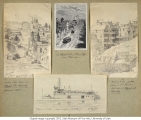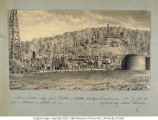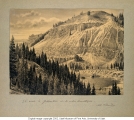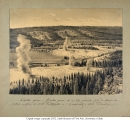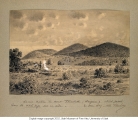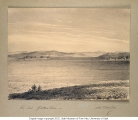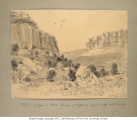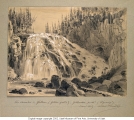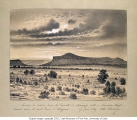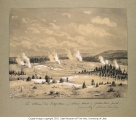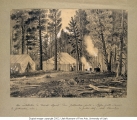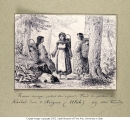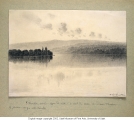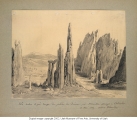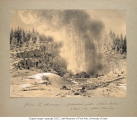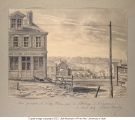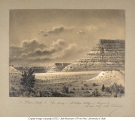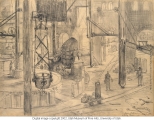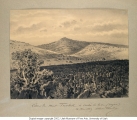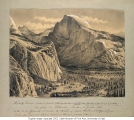| Identifier |
1978_329a-b_trollyMtAdam.jpg |
| Title |
Trolley Ascending Mount Adam, Cincinnati |
| Alternate Title |
Voiture pour l'ascension de Mont Adam (230 feet) à Cincinnati |
| Artist's Notation |
"Le cable de fer central s'enroule autour d'une poulie et ne sert qu'en cas d'accident, si les autres cables se rompaient. Il maintiendrait alors en equilibre le car et les chevaux. Les autres cables s'enroulent autour d'un treuil. Dessin paru dans La Nature. Dessin paru dans mon livre: Six mois aux Etats Unis." |
| Creator |
Tissandier, Albert 1839-1906; Tilly, A. E. |
| Subject |
Inclined railroads--Ohio--Cincinnati--1880-1890; Railroad cars--Ohio--Cincinnati--1880-1890; Horse railroads--Ohio--Cincinnati--1880-1890 |
| Published Location |
Image A, engraved by AE Tilly, was published in La Nature, no 658 (9 Jan 1886), as figure 3 (p. 85), to accompany the third installment of Albert Tissandier's "Lettres d'Amérique", with the caption "Voiture de tramway élevée sur un plan incliné, à Cincinnati. (D'après nature, par M. Albert Tissandier.)" http://cnum.cnam.fr/CGI/fpage.cgi?4KY28.26/89/100/432/0/0 The same image appears as figure 15 (p. 44), engraved by AE Tilly, in Albert Tissandier's book Six mois aux États-Unis : voyage d'un touriste dans l'Amérique du nord suivi d'une excursion à Panama (Paris : G. Masson, [1886]), with the caption "Voiture d'un tramway élevée sur un plan incliné à Cincinnati (d'après nature)". Associated text (p. 43-45): "Cincinnati est admirablement posée sur les rives de l'Ohio. Son superbe pont suspendu, construit en 1865, est le premier modèle de celui de Brooklyn de New-York; il relie la cité à des faubourgs déjà fort populeux. Cincinnati couvre actuellement tout le large espace compris entre le fleuve et les monts Adam, Auburn, Harrison, etc. La ville grandissant toujours, on ne pouvait cependant songer à enlever les montagnes; les Américains n'ont point cédé, ils portent sur les sommets tramways, chevaux et voyageurs. La circulation ainsi établie, un second Cincinnati non moins grand que le premier se construit tous les jours sur les monts et il s'étend, s'augmentant sans cesse. Le croquis que j'ai pris d'une voiture de tramway sur plan incliné représente le système qui relie le bas de la ville au sommet du mont Adam (fig. 15). Le car arrive directement sur la plate-forme qui est montée sur une charpente de fer dont le poids est de 18 tonnes malgré son apparence d'extrême légèreté. Après un arrêt de quelques instants seulement, pour que les employés puissent s'assurer que tout est bien en place, l'ascension commence et, en moins de trois minutes, les 80 mètres de hauteur de la montagne sont gravis. La longueur du trajet parcouru est de 310 mètres, l'angle d'inclinaison étant de 19°. La charpente de fer est munie de roues, et deux gros câbles qui vont s'enrouler autour d'un treuil de fonte lui font faire l'ascension. En même temps qu'un tramway monte, un autre descend, les câbles s'enroulent et se déroulent sur le même treuil. Pour éviter tout accident, un câble de fer est placé entre les deux autres; celui-là est attaché au centre des deux charpentes de fer et glisse autour d'une large poulie. Si les câbles se rompaient malgré toutes les prévisions, ils maintiendraient en équilibre les cars montant et descendant et un accident sérieux ne saurait arriver. Le poids du car, compris chevaux, voyageurs, est de 9 tonnes; la machine à vapeur nécessaire pour faire faire l'ascension des plates-formes est de 600 chevaux. Au sommet du mont Adam, à l'arrivée même des tramways, un immense établissement, construit en bois, est installé pour recevoir les voyageurs. C'est une brasserie colossale pouvant contenir plus de 3000 personnes. Des terrasses d'où l'on domine toute la ville et les courbes grandioses décrites par l'Ohio, des salles de bals d'hiver et d'été, des montagnes russes et des jeux de toutes sortes, des orchestres, sont les principaux attraits de ce curieux établissement. Loin d'être, comme à Philadelphie, d'une sévérité excessive pour le dimanche, les Américains de Cincinnati aiment à s'amuser, et ils vont dans ces immenses brasseries passer avec leur famille une partie du jour et de la soirée. Sur les différents monts de la cité, il existe plusieurs endroits analogues où l'on joue d'assez bonne musique. L'élément allemand domine assez à Cincinnati pour avoir apporté cette différence de moeurs dans cette ville où l'on est moins rigide que dans quelques autres cités des États-Unis." Reproduced in the exhibition catalog, Albert Tissandier : Drawings of nature and industry in the United States, 1885, by Mary F. Francey ([Salt Lake City, UT] : Utah Museum of Fine Arts, 2001), p. 21. |
| Related Image |
For another version of the engraving done by AE Tilly from this drawing see http://content.lib.utah.edu/cgi-bin/docviewer.exe?CISOROOT=/UMFA&CISOPTR=209&CISOSHOW=139 |
| Short Essay |
A rapidly developing technology accounted for the fact that, by 1885, American railroad structures were not only designed to cross the country, but were used for shorter routes as well. These included railways that ascended and descended hillsides. Ascending railroads were built on the hills surrounding several cities including Mt. Washington, Pittsburgh and Mt. Adams, Cincinnati. As cities expanded beyond their valley origins onto perimeter hills, there was a need to transport people to those areas that were rapidly becoming inhabited. Transportation was facilitated by inclined plane railroads, one of the many engineering feats that Tissandier studied and recorded during his journey across the country. The engineering problem posed by ascending railroads inspired Tissandier to make several sketches in addition to final drawings and, later, prints. His drawing of Pittsburgh's Mt. Washington shows the city with its inclined plane from the valley to the top of the hill. The sketch of Mt. Adams, however, reveals the intricate details of the mechanics of these structures. The drawing reproduced here is of the Eden Park passenger trolley at the top of the inclined plane. Completed in 1875, the trolley line served as the primary form of transportation from the valley to Eden Park, a public park, and the Highland House, a restaurant whose location appealed to city dwellers below. Drawing the end of the inclined plane at its termination allowed Tissandier to reveal clearly how the structure functioned as it widened as the hill descended while the track remained level for the entire route. His journal entry (describing the inclined railway at Mount Washington) reads: " ... I visited the curious inclined planes by which one makes the ascension to Mount Washington situated on the other side of the Monongahela. This location is about 120 meters in height, and the city always realized it would have to cross it in the process of expansion. New neighborhoods were established on the side of the summit of the mountain, and because the sides are steep it was difficult to build a road. It was necessary, therefore, to resort to mechanical means in order to assure communication between the two sections of the city." Completed ten years prior to Tissandier's visit, the Mt. Adams incline extended from Lock Street to Rookwood Place and Celestial Street. Mt. Adams and Eden Park, were originally conceived not only as a recreational site for city residents, but as an ideal location for a reservoir to provide a larger quantity and better quality of water for the growing community. However, only a few roads went up the hillside, and those that did were too steep for streetcars to negotiate safely. After the Incline was completed, Mt. Adams became more accessible and was rapidly populated with middle-income neighborhoods and the requisite supporting institutions including banks, churches and small businesses. Tissandier described the installation of the Mt. Adams Incline as superior and speculated that a similar method of transportation in Paris in order to ascend Montmartre might make the perimeter of Paris more accessible. If that should ever happen, the Mt. Adams Incline would be an appropriate model. |
| Publisher |
Utah Museum of Fine Arts |
| Contributors |
Mary F. Francey |
| Date |
1885 |
| Type |
Image |
| Format |
application/pdf |
| Source |
Albert Tissandier: Drawings of Nature and Industry in the United States |
| Language |
fra |
| Rights Management |
Digital image c2001 Utah Museum of Fine Arts, University of Utah |
| Source Physical Dimensions |
33.02 cm High x 41.91 cm Wide |
| Source Characteristics |
Graphite on paper; engraving - metal plate |
| Light Source |
Kaiser Softlite ProVision 6x55W flourescent 5400K daylight |
| Archival Resolution |
TIFF: 5034 x 4261 pixels |
| Display Resolution |
JPEG: 900 x 734 pixels |
| Bit Depth |
36-bit color |
| Scanning Device |
Leica S1 Pro scanning camera; Hasselblad CFi 50mm F/4 lens; f/11 |
| Exhibit Catalog |
ISBN: 0-9657215-0-7; Library of Congress Catalog Number: 2001094211 |
| Setname |
uu_umfa_at |
| ID |
415827 |
| Reference URL |
https://collections.lib.utah.edu/ark:/87278/s6bk1cds/415827 |

